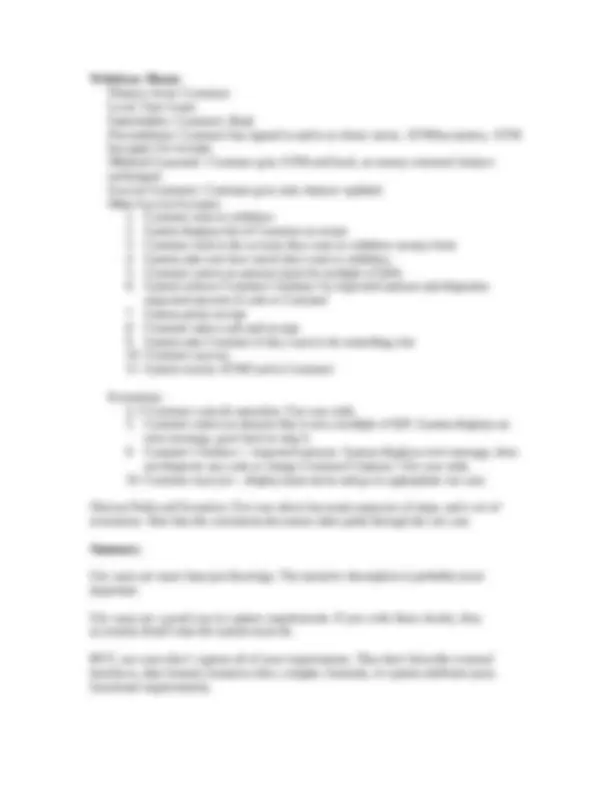





Study with the several resources on Docsity

Earn points by helping other students or get them with a premium plan


Prepare for your exams
Study with the several resources on Docsity

Earn points to download
Earn points by helping other students or get them with a premium plan
Community
Ask the community for help and clear up your study doubts
Discover the best universities in your country according to Docsity users
Free resources
Download our free guides on studying techniques, anxiety management strategies, and thesis advice from Docsity tutors
Material Type: Notes; Professor: Hanks; Class: Software Engn 1: Syst Analysis; Subject: Computer Science Info Systems; University: Fort Lewis College; Term: Unknown 1989;
Typology: Study notes
1 / 5

This page cannot be seen from the preview
Don't miss anything!




Last time on post-iteration reviews
Withdraw Money Primary Actor: Customer Level: User Goals Stakeholders: Customer, Bank Preconditions: Customer has signed in and is at choice menu. ATM has money. ATM has paper for receipts. Minimal Guarantee: Customer gets ATM card back, no money returned, balance unchanged. Success Guarantee: Customer gets cash, balance updated. Main Success Scenario:
Group Exercise Write the description for the deposit money use case. Homework Write the use case descriptions for the check balance and transfer money use cases.